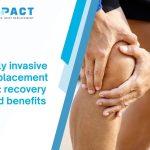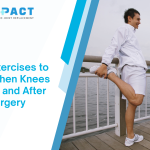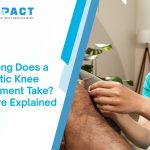you’re looking for an in-depth and personalized exploration of what causes lower back pain and, crucially, how it can be treated. Lower back pain is an incredibly common, often debilitating, condition that can disrupt every aspect of your life. I’m here to walk you through the complexities of this discomfort, offering a comprehensive look at its potential origins, diagnostic approaches, and a wide array of treatment options, especially when seeking lower back pain treatment in India.
Let’s embark on this journey together, unraveling the mysteries behind your pain and guiding you towards understanding and lasting relief. This isn’t just about symptoms; it’s about reclaiming your comfort, mobility, and quality of life.
Decoding the Ache: What Causes Lower Back Pain and How Can it be Treated?
My dear friend, if you’re experiencing lower back pain, you are certainly not alone. It’s one of the most common reasons people seek medical attention, affecting an estimated 80% of adults at some point in their lives. The lower back, or lumbar spine, is a marvel of engineering, designed to support the weight of your upper body, allow for flexible movement, and protect the delicate spinal cord. However, this very design, coupled with the stresses of modern life, makes it particularly vulnerable to injury and pain.
This guide is designed to be your comprehensive companion, helping you understand what causes lower back pain – from the simple to the complex – and exploring the diverse strategies for lower back pain treatment in India. Our goal is to empower you with knowledge, so you can have an informed discussion with medical professionals and ultimately find the relief you deserve.
The Lumbar Spine: A Brief Anatomical Tour
To truly grasp what causes lower back pain, it’s essential to understand the intricate structures of your lumbar spine:
- Vertebrae: Five large, strong bones (L1-L5) stacked one upon another, forming the main support structure of your back.
- Intervertebral Discs: These are jelly-filled cushions located between each vertebra, acting as shock absorbers and allowing for flexibility. Each disc has a tough outer ring (annulus fibrosus) and a soft, gel-like center (nucleus pulposus).
- Ligaments: Strong fibrous bands that connect the vertebrae and help stabilize the spine.
- Muscles and Tendons: A complex network of muscles (e.g., erector spinae, multifidus, quadratus lumborum, psoas) provides support, allows movement, and maintains posture. Tendons connect these muscles to the bones.
- Nerves: Spinal nerves branch out from the spinal cord, exiting through small openings between the vertebrae (foramina), and travel down to the legs, feet, and pelvic area.
- Facet Joints: Small joints located at the back of each vertebra, allowing for gliding movements and providing stability.
Struggling with Lower Back Pain?
Lower back pain can limit your daily life. Expert diagnosis and personalized treatments can help relieve pain and restore mobility.
Book an AppointmentCommon Culprits: What Causes Lower Back Pain?
The causes of lower back pain are incredibly diverse, ranging from minor muscle strains to more serious structural issues. Let’s break down the most common ones:
1. Musculoskeletal Strain and Sprain (The Most Frequent Cause): This is by far the most common reason for acute lower back pain. It occurs when muscles or ligaments in the back are stretched or torn due to: * Improper Lifting: Lifting heavy objects without using proper technique (bending at the knees, keeping the back straight). * Sudden Awkward Movements: Twisting, turning, or bending unexpectedly. * Overuse: Repetitive motions that strain the back muscles. * Poor Posture: Prolonged sitting or standing in an unhealthy posture can put undue stress on the lower back. * Lack of Exercise/Weak Core Muscles: Weak abdominal and back muscles provide insufficient support for the spine, making it vulnerable to injury. * Muscle Spasm: Often a protective mechanism in response to an underlying strain or irritation, leading to severe, sharp pain and stiffness.
2. Degenerative Disc Disease (DDD): Despite its name, DDD is often a natural part of aging, where the intervertebral discs gradually lose water content, become less flexible, and can show signs of wear and tear. This can lead to: * Disc Thinning: Reducing the cushioning effect between vertebrae. * Disc Herniation/Bulging: The outer ring of the disc weakens, allowing the inner jelly-like material to bulge outwards or rupture (herniate). If this presses on a spinal nerve, it can cause radiating pain (sciatica), numbness, tingling, or weakness in the leg. * Osteoarthritis (Spondylosis): Degenerative changes in the facet joints of the spine, leading to cartilage breakdown, bone spurs, and pain.
3. Sciatica (Lumbar Radiculopathy): This is a specific type of pain that occurs when the sciatic nerve (the longest nerve in the body, originating from the lower spine and running down the back of each leg) is irritated or compressed. Common causes include: * Herniated Disc: The most common cause, as the disc presses directly on the nerve root. * Spinal Stenosis: Narrowing of the spinal canal (central stenosis) or the nerve root exits (foraminal stenosis), compressing the nerve. * Spondylolisthesis: One vertebra slips forward over the one below it. * Piriformis Syndrome: The piriformis muscle (in the buttock) irritates the sciatic nerve as it passes through or under it.
4. Spinal Stenosis: This condition involves the narrowing of the spinal canal (the space through which the spinal cord passes) or the nerve root exits (foramina). This narrowing puts pressure on the spinal cord and/or nerves, leading to: * Pain, numbness, tingling, or weakness: Often in both legs. * Claudication: Symptoms that worsen with standing or walking and improve with sitting or leaning forward (which opens up the spinal canal).
5. Spondylolisthesis: A condition where one vertebra (most commonly L5 over S1) slips forward over the vertebra below it. It can be caused by: * Degenerative changes: In older adults due to weakened ligaments and joints. * Stress fractures (spondylolysis): In younger individuals, particularly athletes, affecting a part of the vertebra called the pars interarticularis. * Congenital defects: Present from birth. When the slippage is significant, it can compress nerves, causing pain and neurological symptoms.
6. Sacroiliac Joint Dysfunction (SI Joint Pain): The sacroiliac (SI) joints are located where the sacrum (the triangular bone at the base of the spine) meets the ilium (the large bones of the pelvis). Dysfunction in these joints, either too much or too little movement, can cause lower back pain, often felt on one side of the lower back or buttock, sometimes radiating down the leg.
Struggling with Lower Back Pain?
Lower back pain can limit your daily life. Expert diagnosis and personalized treatments can help relieve pain and restore mobility.
Book an Appointment7. Other Less Common, But Important Causes:
- Fractures:
- Compression Fractures: Often due to osteoporosis, where a vertebra collapses.
- Traumatic Fractures: From falls or accidents.
- Infections: Rare, but can affect the vertebrae (osteomyelitis) or discs (discitis), causing severe pain, fever, and general malaise.
- Tumors: Very rare, but cancerous growths (primary or metastatic) can develop in the spine, leading to persistent, severe back pain that doesn’t improve with rest.
- Inflammatory Arthritis: Conditions like ankylosing spondylitis or psoriatic arthritis can cause chronic back pain, stiffness, and inflammation, often worse in the morning.
- Kidney Stones/Infections: Referred pain from kidney issues can sometimes manifest as severe lower back or flank pain.
- Abdominal Aortic Aneurysm (AAA): A dangerous bulging of the aorta in the abdomen. Rupture can cause sudden, severe back pain.
- Endometriosis (in women): Can cause cyclical lower back pain.
When to Seek Medical Attention: Don’t Ignore the Red Flags
While most acute lower back pain resolves on its own or with conservative care, certain symptoms warrant prompt medical evaluation. You should definitely see a doctor, especially at a specialized center for lower back pain treatment in India, if you experience:
- Sudden, severe pain after an injury or fall.
- Pain accompanied by numbness, tingling, or weakness in one or both legs.
- Pain radiating down one or both legs, especially if it goes below the knee.
- Loss of bowel or bladder control (urinary or fecal incontinence) – this is a medical emergency (Cauda Equina Syndrome).
- Numbness in the groin or inner thigh area (saddle anesthesia).
- Unexplained weight loss or fever.
- Pain that worsens at night or wakes you from sleep.
- Pain that does not improve with rest and over-the-counter pain relievers after a few days to a week.
- Pain that is getting progressively worse.
Struggling with Lower Back Pain?
Lower back pain can limit your daily life. Expert diagnosis and personalized treatments can help relieve pain and restore mobility.
Book an AppointmentThe Diagnostic Journey: Pinpointing the Cause
When you visit a medical professional for lower back pain treatment in India, they will embark on a systematic diagnostic process to pinpoint the cause of your discomfort.
- Thorough Medical History: This is the foundational step. The doctor will ask detailed questions about:
- The onset of your pain (sudden or gradual).
- The exact location and radiation of the pain.
- The type of pain (sharp, dull, aching, burning, shooting).
- Factors that worsen or alleviate the pain.
- Any associated symptoms (numbness, tingling, weakness, fever, weight loss, bowel/bladder changes).
- Your occupation, hobbies, and daily activities.
- Any previous back injuries or medical conditions.
- Your general health and medications.
- Comprehensive Physical Examination: The doctor will meticulously examine your back, which may include:
- Observation: Looking for any asymmetry, swelling, or muscle spasms.
- Palpation: Gently feeling for tenderness, muscle knots, or abnormalities along the spine.
- Range of Motion Tests: Assessing your flexibility in bending, twisting, and extending your back.
- Strength Testing: Evaluating the strength of various muscle groups in your legs and feet.
- Neurological Examination: Checking your reflexes, sensation, and muscle strength to identify any nerve compression.
- Special Tests: Performing specific maneuvers to pinpoint issues like disc herniation, sciatica, or SI joint dysfunction.
- Diagnostic Imaging (If Needed):
- X-rays: Primarily used to visualize bone structures, detect fractures, arthritis, bone spurs, or alignment issues like spondylolisthesis. They don’t show soft tissues like discs or nerves well.
- MRI (Magnetic Resonance Imaging): Provides detailed images of soft tissues like muscles, tendons, ligaments, discs, and nerves. It’s excellent for identifying herniated discs, spinal cord compression, nerve root impingement, and tumors. Often the go-to if nerve pain or structural issues are suspected.
- CT Scan (Computed Tomography): Offers detailed cross-sectional images, particularly good for bony anatomy and sometimes used when MRI is contraindicated.
- Bone Scan: If an infection, tumor, or stress fracture is suspected.
- Electrodiagnostic Studies (If Nerve Involvement is Suspected):
- EMG (Electromyography) and NCS (Nerve Conduction Studies): These tests measure the electrical activity of muscles and the speed of nerve impulses. They can help confirm nerve compression, identify the specific nerve involved, and assess the severity of nerve damage.
Struggling with Lower Back Pain?
Lower back pain can limit your daily life. Expert diagnosis and personalized treatments can help relieve pain and restore mobility.
Book an AppointmentHow Can Lower Back Pain Be Treated? A Spectrum of Solutions
Once a diagnosis is made, your medical team at a facility like Impact Ortho will devise a personalized treatment plan. The approach to lower back pain treatment in India is often multi-faceted, ranging from conservative measures to, in some cases, surgical intervention.
1. Conservative Management (Often the First Line of Treatment):
- Rest and Activity Modification: Temporarily avoiding activities that aggravate the pain is crucial. This doesn’t mean complete bed rest, but rather intelligent modification. Staying active with gentle movements is usually better than prolonged inactivity.
- Medications:
- Over-the-Counter (OTC) Pain Relievers: NSAIDs (e.g., ibuprofen, naproxen) for inflammation and pain, or acetaminophen for pain relief.
- Prescription Medications: Muscle relaxants for muscle spasms, stronger NSAIDs, neuropathic pain medications (e.g., gabapentin, pregabalin) for nerve-related pain, and sometimes short courses of oral corticosteroids to reduce severe inflammation.
- Physical Therapy (Physiotherapy): This is often the cornerstone of non-surgical treatment and highly effective for lower back pain treatment in India. A skilled physical therapist will design a program to:
- Reduce pain and inflammation.
- Improve flexibility and range of motion in the spine.
- Strengthen weakened core muscles (abdominal, back, and gluteal muscles) to provide better spinal support.
- Improve posture and body mechanics for daily activities.
- Teach ergonomic principles for work and home.
- Utilize modalities like heat, ice, ultrasound, or electrical stimulation.
- Injections:
- Epidural Steroid Injections: Injected into the epidural space around the spinal cord and nerves to reduce inflammation and pain caused by disc herniation or spinal stenosis.
- Facet Joint Injections: For pain originating from the small facet joints.
- Nerve Root Blocks: Targeting a specific irritated nerve root.
- Sacroiliac (SI) Joint Injections: For pain originating from the SI joint.
- Trigger Point Injections: For painful muscle knots.
- Chiropractic Care/Osteopathic Manipulation: For certain musculoskeletal alignment issues and to restore spinal mobility.
- Massage Therapy: Can help release muscle tension and improve blood flow.
- Acupuncture: Some people find relief from pain through acupuncture.
- Yoga/Pilates: When practiced under proper guidance and once acute pain has subsided, these can significantly improve core strength, flexibility, and body awareness, aiding in long-term prevention.
Struggling with Lower Back Pain?
Lower back pain can limit your daily life. Expert diagnosis and personalized treatments can help relieve pain and restore mobility.
Book an Appointment2. Surgical Intervention (When Conservative Measures Fail):
Surgery is usually considered only after extensive conservative treatments have been exhausted (typically 6-12 weeks) and if the pain is severe, persistent, or accompanied by progressive neurological deficits (e.g., worsening weakness, foot drop, or bowel/bladder issues). At Impact Ortho, surgical options are carefully considered and discussed only when truly necessary.
- For Disc-Related Issues:
- Microdiscectomy: A minimally invasive procedure to remove the herniated portion of a disc that is pressing on a nerve.
- Laminectomy: Removal of part of the bone (lamina) to decompress the spinal cord or nerves, often done for spinal stenosis.
- Spinal Fusion: Permanently joining two or more vertebrae together to stabilize the spine and relieve pain, often used for spondylolisthesis, severe instability, or severe degenerative disc disease. This limits motion but can be very effective for specific conditions.
- Artificial Disc Replacement: An alternative to fusion for some patients, allowing the spine to maintain some motion.
- For Fractures/Deformities:
- Various surgical techniques depending on the type and severity of the fracture or deformity.
Living with and Managing Chronic Lower Back Pain
If your lower back pain becomes chronic (lasting more than 3 months), managing it effectively involves a holistic approach, often focusing on improving function and quality of life, even if some residual pain remains.
- Pacing Activities: Learning to balance activity and rest to avoid flare-ups and conserve energy.
- Stress Management: Stress can significantly exacerbate back pain. Techniques like mindfulness, meditation, yoga, deep breathing exercises, or even engaging in hobbies can be incredibly helpful.
- Ergonomics: Optimizing your workspace, car seat, and home environment to support good posture and minimize strain on your back. This includes proper chair height, monitor placement, and keyboard/mouse positioning.
- Regular, Gentle Exercise: Continuing a low-impact exercise program (e.g., walking, swimming, cycling, specialized back exercises) to maintain strength, flexibility, and overall fitness. Consistency is key.
- Weight Management: Losing excess weight reduces the load on your spine.
- Smoking Cessation: Smoking impairs blood flow to the discs and can worsen back pain and hinder healing.
- Support Groups: Connecting with others who experience chronic pain can provide emotional support, practical tips, and a sense of community.
- Psychological Support: A pain psychologist can provide cognitive behavioral therapy (CBT) or other strategies for coping with chronic pain, improving sleep, and reducing pain’s impact on your life.
Struggling with Lower Back Pain?
Lower back pain can limit your daily life. Expert diagnosis and personalized treatments can help relieve pain and restore mobility.
Book an AppointmentFAQs: Your Questions About Lower Back Pain Answered
Here are some frequently asked questions that might be on your mind when dealing with lower back pain, especially when looking for lower back pain treatment in India:
Is bed rest good for lower back pain?
For most acute lower back pain, prolonged bed rest is generally not recommended. While a day or two of rest might be helpful for severe pain, prolonged inactivity can actually worsen stiffness, weaken muscles, and delay recovery. Gentle activity and movement are usually encouraged as soon as tolerable.
When should I use ice versus heat for lower back pain?
after injury or a flare-up), ice is usually preferred to reduce inflammation. After the initial acute phase, or for chronic muscle stiffness and aches, heat can be more effective for relaxing muscles and increasing blood flow. You can also alternate between the two, or use whichever feels better for your specific pain.
Can poor posture cause lower back pain?
Absolutely. Poor posture, whether sitting or standing, puts undue stress on the ligaments, muscles, and discs in your lower back over time. Slouching, hunching, or leaning unevenly can lead to muscle imbalances and chronic strain, which are significant contributors to lower back pain. Ergonomic adjustments and conscious posture correction are vital for prevention and treatment.
What’s the role of exercise in treating lower back pain?
Exercise is a cornerstone of lower back pain treatment in India and worldwide. It helps strengthen core muscles (abdominal and back muscles), improve flexibility, enhance blood circulation to the spine, and improve overall conditioning. However, the type of exercise must be appropriate for your specific condition and guided by a physical therapist, especially initially, to avoid exacerbating the pain.
How long does it take for lower back pain to go away?
This varies significantly based on the cause. Most acute episodes of lower back pain due to muscle strain or sprain resolve within a few days to a few weeks (typically 4-6 weeks) with conservative care. However, if the pain is due to a herniated disc, spinal stenosis, or other structural issues, it may take several months to improve, and some individuals may experience chronic pain that requires ongoing management.
Can lifestyle changes really make a difference for lower back pain?
Absolutely. Lifestyle factors like maintaining a healthy weight, regular exercise (especially core strengthening), practicing good posture, using proper lifting techniques, quitting smoking, and managing stress can significantly reduce the risk and severity of lower back pain. These changes are often as important as medical treatments in both prevention and long-term management.
Understanding what causes lower back pain and the wide range of available lower back pain treatment in India is your first step towards relief. Remember, seeking professional medical advice is paramount for an accurate diagnosis and an effective, personalized treatment plan. The dedicated team at Impact Ortho stands ready to provide you with expert care, helping you regain your comfort and mobility. Impact Ortho is committed to being your partner on this healing journey.











